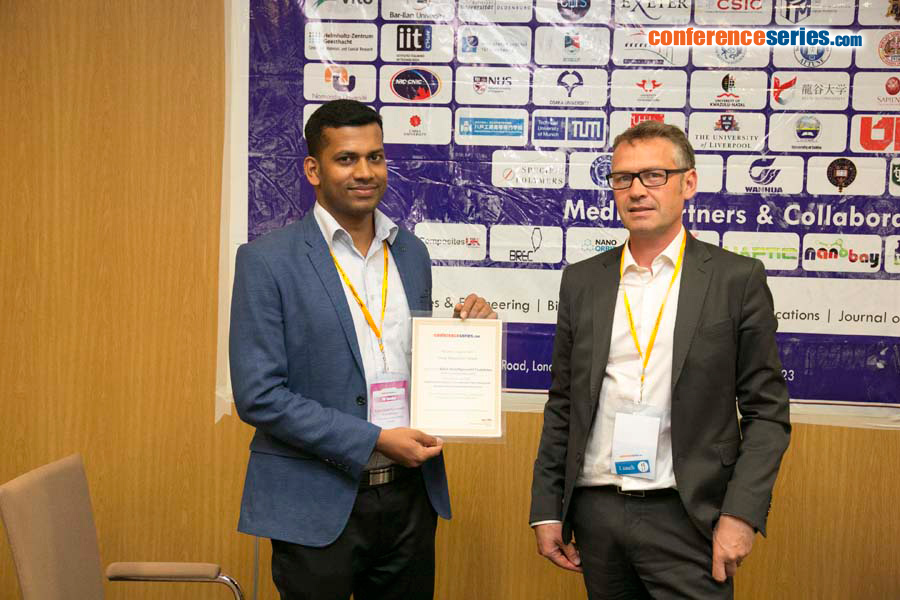
Rahul Madathiparambil Visalakshan
University of South Australia, Australia
Title: Biomaterial surface modification to control inflammation: Effect of nanotopography and surface chemistry on protein adsorption and cell response
Biography
Biography: Rahul Madathiparambil Visalakshan
Abstract
Biomaterial surface nanotopography and chemical functionalities have been shown to play a critical role in modulating the host immune response. Studies have demonstrated that the effect of surface characteristics are translated through the surface adsorbed protein layer to the immune cells. Recently, various techniques have been developed to create surfaces with nanotopography to control protein and cell responses. Most of these studies attempted to produce nanotopography by etching the surface to incorporate pores, grooves, and pillar structures. However, inconsistent topography, chemical functionalities and lack of reproducibility resulted in conflicting reports. Therefore, we developed a technique that can produce well-defined and reproducible topography to identify the role of specific roughness size, height, density and presence of homogeneous chemical functionality. Using plasma polymerization of oxazoline monomers and immobilized gold nanoparticles, we created surfaces with an equal number density of nanoparticles of different sizes. This surface was used to study the role of surface nanotopography and the interplay of surface chemistry on proteins and cells. Effect of nanotopography on fibrinogen adsorption was investigated using quartz crystal microbalance with dissipation and the mass of fibrinogen adsorbed were decreased on surfaces with increasing nano-topography. Cell responses such as adsorption and proliferation were studied using human dermal fibroblasts.


